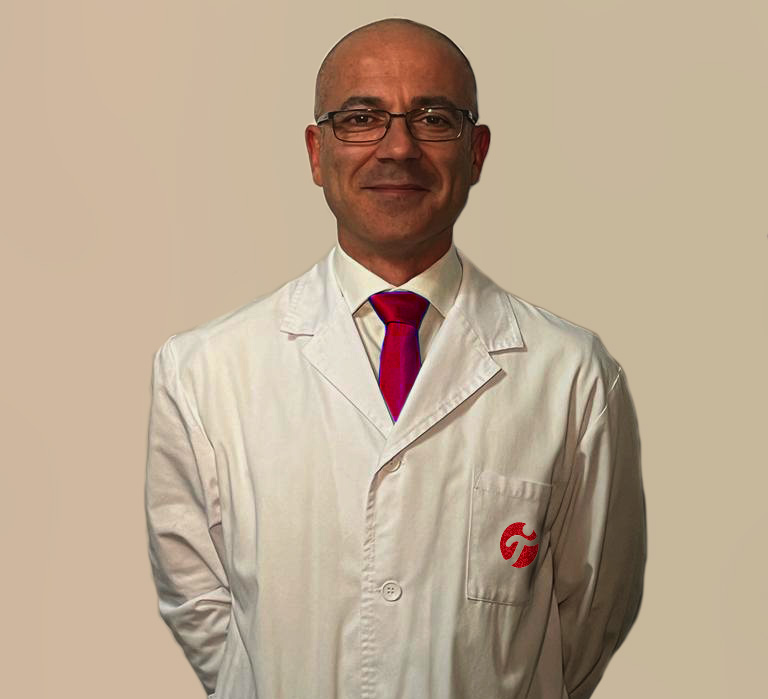![[VIDEO] Ultrasound-Guided Injection for Trigger Finger](https://drjordijimenez.com/imagen/100/100/Imagenes/infiltracion-ecoguidada-dedo-resorte-drjordijimenez.jpg)
- Home /
- PATHOLOGIES /
- OSTEOARTHRITIS
OSTEOARTHRITIS
OSTEOARTHRITIS
DR. JORDI JIMÉNEZ
Osteoarthritis is a chronic, non-inflammatory, degenerative joint disease. The onset of the disease, as a result of various factors, lies in the alteration of the metabolism of articular hyaline cartilage. As Dr. Jordi Jiménez is well aware, it is the most common joint disease and is more common in women.
Hyaline cartilage is a tissue with special properties of elasticity and strength that allow for smooth joint mobility. When cartilage is damaged, this function is impaired. The consequence is pain, swelling, and stiffness in the joints.
Factors related to osteoarthritis
- It is hereditary.
- Being overweight increases the risk of hips, knees, ankles and feet
- Having suffered fractures or other joint injuries such as ligament injuries or chronic joint instability.
- Sports that involve direct impact on the joint, such as twisting or throwing, also increase the risk.
Diseases that can lead to osteoarthritis are:
- Bleeding disorders that can cause bleeding into the joint, such as hemophilia.
- Disorders that block blood circulation in a joint and lead to avascular necrosis
- Other types of arthritis, for example gout or rheumatoid arthritis.
- Symptoms usually appear in middle-aged people and are most common after age 70. Joint pain and stiffness are the most common symptoms. The pain often worsens:
- After exercise.
- When weight is applied or pressure is exerted on the joint.
With osteoarthritis, joints become stiffer and more difficult to move over time. You may feel grinding, creaking, or popping when you move the joint.
The stiffness lasts about 30 minutes or less. It may last longer if the joint is swollen. It often improves after mild activity that allows the joint to "warm up." During the day, the pain may worsen with activity and improve with rest. As the disease worsens, the pain may be continuous and may even interfere with sleep at night. Some people may have no symptoms even though X-rays show the degenerative changes of the disease (clinical-radiological dissociation).
Physical examination may show:
- Movement that causes rubbing or squeaking sound (crepitation)
- Joint inflammation
- Decreased mobility.
- Joint pain on palpation.
- Normal movement is often painful.
- Joint deformity in very advanced cases
Blood tests are of no use in diagnosing it.
X-rays may show:
- Loss of joint space (joint impingement)
- Wear of the ends of the bone
- Bone spurs (osteophytes)
Osteoarthritis cannot be cured and will likely worsen over time. However, symptoms can be managed. Surgery may be the solution, but other treatments can improve pain and therefore quality of life. Although these treatments cannot make osteoarthritis disappear, they can often delay surgery.
Drugs
Pain relievers can help with symptoms. Most doctors recommend paracetamol first. If pain persists, nonsteroidal anti-inflammatory drugs (NSAIDs) may be recommended. Supplements that can be used include:
- Glucosamine, Chondroitin.
- Capsaicin cream for pain relief.
- Viscosupplementation
Lifestyle changes
- Staying active and exercising can maintain joint movement.
- Walking, Pilates, or water exercises such as swimming are helpful.
- Other recommendations:
- Apply heat and cold to the joint
- Maintain a healthy diet
- Get enough rest
- Losing weight if you are overweight
Physiotherapy
It can help improve muscle strength and mobility in stiff joints, as well as balance. Massage therapy can also help with pain relief. Be sure to work with a therapist experienced in managing osteoarthritis.
Orthopedic devices
Splints and orthopedic devices can sometimes provide support for affected joints. Some prevent joint movement; others allow some movement. They should only be used when recommended by an orthopedic surgeon or therapist, as improper use can cause joint damage, stiffness, and pain.
Alternative Treatments
Acupuncture is a traditional Chinese treatment. It is believed that when needles stimulate certain points on the body, substances that block pain are released. Acupuncture can provide pain relief.
Surgery
Severe cases or those that do not improve with the above treatments may require surgery to replace or repair damaged joints. There are several options:
- Arthroscopic surgery to clean the joint (damaged cartilage, degenerated and/or torn meniscus, inflammation of the synovial membrane, etc.)
- Changing the axis of a bone to relieve pressure on the affected joint (osteotomy)
- Surgical fusion of bones, usually in the spine (arthrodesis)
- Partially or completely replace the affected joint with a prosthesis
Prevention of Osteoarthritis
Try not to overstress the painful joint at work or during daily activities. Maintain a normal body weight. Strengthen your muscles, especially those in weight-bearing joints (hip, knee, or ankle).
 |
DR. JORDI JIMÉNEZ GENERAL TRAUMATOLOGY SPORTS TRAUMATOLOGY ULTRASOUND-GUIDED THERAPIES |
Book an appointment with Dr. Jordi Jiménez. He will see you in the center of Palma de Mallorca and help you regain your quality of life.

![[VIDEO] Ultrasound-guided infiltration of the lumbar facets](https://drjordijimenez.com/imagen/100/100/imagenes-pagina/sindrome-facetario-lumbar-drjordijimenez (1).jpg)
![[VIDEO] Ultrasound-guided infiltration of the hip joint](https://drjordijimenez.com/imagen/100/100/Imagenes/valgo-dinamico-rodilla-drjordijimenez.jpg)